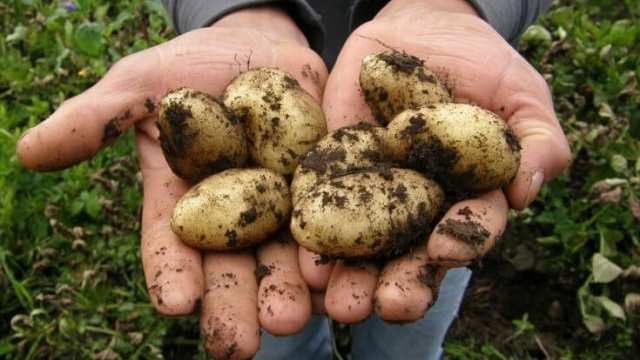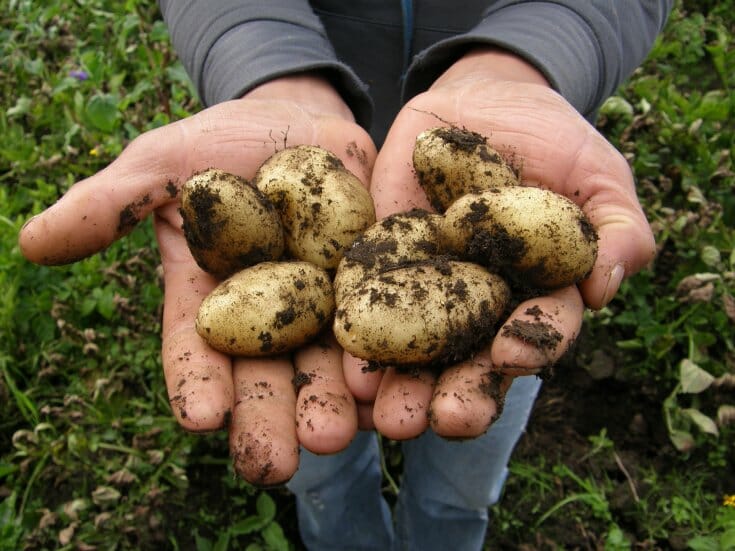
The Perfect Partners: Unlocking the Secrets of Potato Companion Plants
Ryan Flores -Are you looking to maximize the potential of your potato crop? Look no further! In this article, we will delve into the world of potato companion plants, unlocking the secrets that can help you achieve a bountiful and thriving harvest. By carefully selecting the right plants to grow alongside your potatoes, you can create a harmonious ecosystem that not only enhances growth, but also promotes natural pest control and improves soil fertility. Join us as we dive into the fascinating world of potato companion plants and discover the perfect partners for your spuds!
When it comes to potato planting, choosing the right companions can make a world of difference. These carefully selected plants can provide numerous benefits to your potatoes, acting as their partners in growth. Whether it’s improving nutrient uptake, deterring pests, or even enhancing flavors, the synergy between potato plants and their companions is truly remarkable. Excitingly, there are a variety of plants that can fulfill these roles, and by incorporating them into your garden, you can create a thriving, sustainable environment for your potato crop.
Before we delve into the specific benefits of potato companion plants, it’s important to mention the role of soil health in promoting successful growth. Companies like Kellogg Garden and G&B Organics offer a range of organic soils specially formulated to provide optimal conditions for your plants. Investing in high-quality soil not only ensures the health and vigor of your potatoes but also sets the stage for successful companion planting. With all the elements in place, let’s explore some of the best companions that can unlock the secrets to a thriving potato crop!
Remember, by choosing the right companions for your potato plants and nurturing the soil they grow in, you can unleash the full potential of your spuds. Stay tuned as we delve deeper into the world of potato companion plants and unravel the mysteries that lie beneath the surface. Get ready to transform your potato-growing experience and cultivate a flourishing garden ecosystem like never before. The perfect partners await, so let’s dig in together!
Choosing the Right Potato Companion Plants
When it comes to potato planting, choosing the right companion plants can make all the difference. By selecting the right plants to grow alongside your potatoes, you can improve their growth, health, and overall yield. In this section, we will explore some of the best potato companion plants and the benefits they bring to your potato patch.
-
Marigolds: Marigolds are not only beautiful flowers that add color to your garden, but they also have a number of benefits when planted alongside potatoes. These vibrant blooms are known for their ability to repel harmful insects such as nematodes. Additionally, marigolds attract beneficial insects like ladybugs and lacewings, which help to keep pests at bay. By planting marigolds as companion plants, you can protect your potatoes from infestations and improve their overall health.
-
Beans: Beans are an excellent choice to grow alongside potatoes. They are known as nitrogen-fixing plants, which means they have the ability to convert atmospheric nitrogen into a form that can be used by other plants. This is beneficial for potatoes, as they require a good amount of nitrogen for healthy growth. By planting beans in close proximity to your potato plants, you can help provide them with the nitrogen they need, resulting in stronger and more productive potato plants.

Nasturtiums: Nasturtiums are not only visually appealing with their vibrant flowers, but they also offer multiple benefits as potato companion plants. These flowers act as a natural repellent against pests such as aphids and whiteflies, which can be detrimental to potato plants. Nasturtiums also attract predatory insects like hoverflies, which feed on common potato pests. With their pest-deterring properties, nasturtiums make for an excellent addition to any potato garden.
By carefully selecting the right potato companion plants, you can create a more balanced and fruitful garden. Incorporating marigolds, beans, and nasturtiums into your potato patch can help improve the overall health of your potatoes, deter harmful pests, and promote a thriving ecosystem. So why not experiment with these companion plants and unlock the secrets to a successful potato harvest?
Maximizing Potato Planting Success
When it comes to growing potatoes, selecting the right companion plants is essential for maximizing your planting success. By choosing the ideal companions, you can enhance the growth, health, and yield of your potato plants. Let’s explore some key tips for making the most out of your potato planting journey.
-
Complementing Nutrient Requirements: One of the best ways to optimize potato planting is by selecting companion plants that have complementary nutrient requirements. By doing so, you can ensure that each plant thrives without competing for essential resources. For example, planting legumes like beans or peas alongside potatoes can provide an additional source of nitrogen, which potatoes require for healthy foliage growth.
-
Pest Control Partners: Another valuable aspect of potato companion planting is the ability to naturally control pests. Certain plants have the unique ability to repel or distract pests that could harm your potato crop. Marigolds, for instance, can act as natural pest repellents and are an excellent companion plant for potatoes. Their vibrant blooms not only add beauty to your garden but also deter nematodes, beetles, and other harmful insects.
-
Soil Enhancement: Investing in high-quality soils is crucial for successful potato planting. Companies like "Kellogg Garden" and G&B Organics offer organic soils specially formulated to provide the necessary nutrients, moisture retention, and drainage for optimal potato growth. Enhancing your soil with compost or well-rotted manure can also boost fertility and improve overall soil health, ensuring robust potato plants.
By implementing these tips when selecting potato companion plants, you can create a thriving and harmonious ecosystem in your garden. Maximizing potato planting success not only leads to bountiful harvests but also promotes a sustainable and environmentally friendly approach to gardening.
Stay tuned for our next section, where we will delve into specific companion plants that are known to work exceptionally well with potatoes.
Enhancing Potatoes with Kellogg Garden Organics
When it comes to potato planting, one key factor that can greatly impact the success of your crop is the quality of the soil. That’s where Kellogg Garden Organics comes in. With their wide range of organic soil products, they provide a perfect solution for potato growers who want to give their spuds the best possible start.
Kellogg Garden Organics offers a variety of soils that are specifically formulated to meet the nutritional needs of potatoes. These soils are enriched with essential nutrients and beneficial microbes, which promote healthy root development and overall plant growth. By using Kellogg Garden Organics, you can ensure that your potato plants have access to the nutrients they need to thrive.
In addition to their high-quality soil products, Kellogg Garden Organics also takes pride in their commitment to sustainability. Their soils are made from recycled and natural ingredients, making them a great choice for eco-conscious gardeners. By choosing Kellogg Garden Organics for your potato companion plants, you can feel good about supporting a company that values the environment.
So, if you’re looking to enhance your potato planting experience, consider using Kellogg Garden Organics soils. With their nutrient-rich formulas and sustainable practices, they are the perfect partner for growing healthy and delicious potatoes.
You may also like
Archives
- December 2025
- November 2025
- October 2025
- September 2025
- August 2025
- July 2025
- June 2025
- May 2025
- April 2025
- March 2025
- February 2025
- January 2025
- December 2024
- March 2024
- February 2024
- January 2024
- December 2023
- November 2023
- October 2023
- September 2023
- August 2023
- July 2023
- June 2023
- May 2023
- April 2023
- March 2023
- February 2023
- January 2023
- December 2022
- November 2022
- October 2022
- September 2022
- August 2022
- July 2022
- June 2022
- May 2022
- April 2022
- March 2022
- February 2022
- January 2022